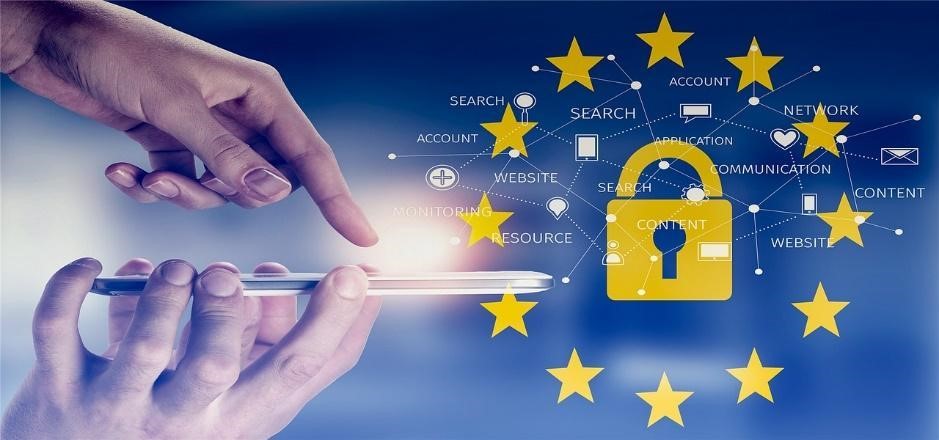Keeping user data safe is essential for any app development company. Laws like GDPR and HIPAA exist to protect personal and health-related information. If your app doesn’t follow these laws, you could face large fines and lose user trust.
This guide explains how to make a GDPR-compliant app and build a HIPAA-compliant app in simple steps.
GDPR (General Data Protection Regulation)
Who It Applies To:
Apps that collect or process personal data from people in the European Union (EU).
Main Requirements:
- Get clear permission before collecting personal data
- Let users access, change, or delete their data
- Only collect data that is truly needed
- Protect data with strong security
- Report data breaches within 72 hours
Penalties:
Breaking GDPR rules can cost up to 20 million or 4% of your company’s annual revenue.
HIPAA (Health Insurance Portability and Accountability Act)
Who It Applies To:
Apps that handle protected health information (PHI) in the United States.
Main Requirements:
- Keep patient data private and secure
- Limit who can access health records
- Record all data access and changes
- Use encryption to protect patient data
- Sign agreements with third-party services that handle health data
Penalties:
Fines range from $141 to $2,134,831 per violation, with a maximum of $2,134,831 per year.
How to Make Your App GDPR Compliant
1. Understand What Data You Collect
Make a list of all personal data your app collects, such as:
- Names
- Emails
- IP addresses
- Location data
You should also explain why you collect this data and how it’s used.
2. Get User Permission (Consent)
Before collecting data, users must agree to it. Use a clear and simple consent form. Users should also be able to change their mind and remove consent easily.
3. Limit Data Collection
Only collect the information that is absolutely necessary for your app to function. The less data you store, the lower the risk.
4. Give Users Control Over Their Data
Users should be able to:
- See what data you have
- Change their information
- Delete their data
- Download a copy of their data
5. Protect Data With Encryption
Use strong security measures like encryption to protect personal information from hackers. Always use HTTPS for data transfer.
6. Have a Plan for Data Breaches
If there’s a data leak, you must:
- Inform the authorities within 72 hours
- Notify affected users as soon as possible
FOR MORE INFORMATION CLICK HERE : best wedding anniversary gifts
7. Hire a Data Protection Officer (DPO) if Needed
If your app processes a lot of personal data, you may need to appoint a DPO to oversee compliance.
How to Make Your App HIPAA Compliant
1. Know What Counts as Protected Health Information (PHI)
This includes any personal health data, such as:
- Medical history
- Test results
- Insurance details
- Doctor notes
If your app handles this type of data, HIPAA rules apply.
2. Limit Access to Health Data
Only authorized people should see sensitive health records. Use:
- Strong passwords
- Two-factor authentication (2FA)
- Automatic logout after inactivity
3. Use Encryption for Data Security
All health data must be encrypted both when stored and when sent over the internet.
4. Track Who Accesses Data (Audit Logs)
Your app should record when someone views or changes patient data. These logs must be stored securely for future review.
5. Have a Backup Plan
Create automatic backups to prevent data loss due to:
- Cyberattacks
- System failures
- Natural disasters
6. Sign Business Associate Agreements (BAAs)
If your app shares health data with third-party services (such as cloud storage providers), those companies must sign a legal agreement agreeing to follow HIPAA rules.
7. Check for Security Risks Regularly
Run security tests to find weaknesses in your app. Fix issues before they become bigger problems.
Best Practices for Compliance
Following GDPR and HIPAA should not be an afterthought. Build compliance into your app from the start.
1. Follow Privacy by Design
- Build privacy and security into the app’s foundation
- Do not collect unnecessary data
2. Train Your Development Team
- Make sure developers understand GDPR and HIPAA
- Keep your team updated on new rules
3. Use Compliance Tools and APIs
- Use secure authentication systems (such as AWS Cognito or Okta)
- Pick GDPR-compliant analytics that anonymize data
4. Test Your App Before Launching
- Check how your app collects and processes data
- Run security audits to find weak spots
5. Monitor and Update Regularly
Privacy laws change over time. Update your app’s policies and security settings to stay compliant.
Why GDPR and HIPAA Compliance Matters
Ignoring these regulations can cost you money and damage your app’s reputation. But compliance has many benefits:
- Earn User Trust – People feel safer using apps that protect their data.
- Avoid Fines – Following the rules helps prevent costly penalties.
- Stand Out from Competitors – A secure app is more attractive to users and businesses.
Final Thoughts
Making your app GDPR and HIPAA compliant isn’t just about following rules—it’s about protecting users and building trust. Whether you’re developing a healthcare app, a business platform, or any data-driven application, compliance should be a top priority.
If you’re unsure about meeting these regulations, working with an experienced app development agency can help ensure that your app meets the highest security and privacy standards. By taking the right steps, you can create a safe, legal, and trustworthy app that users feel confident using.







